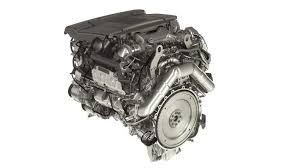Introduction: Maximizing Performance and Efficiency
When you sit behind the wheel of your Land Rover, it’s more than just driving. You’re commanding a masterpiece of engineering. At the heart of this masterpiece lies the Land Rover engine, a marvel of power and precision. In this guide, we’ll explore the intricacies of your Land Rover engine. We’ll look at ways to optimize its performance and efficiency. Our goal is to enhance your driving experience like never before.
Understanding Your Land Rover Engine
Before we dive into optimization techniques, let’s take a moment to understand the core components of your Land Rover engine. Whether you own a Discovery, Range Rover, or Defender, Land Rover engines are renowned for their robustness and capability.
Key Components:
Cylinder Block: The foundation of your engine, housing the cylinders where combustion takes place.
Pistons: Move up and down within the cylinders, converting the energy from fuel combustion into mechanical motion.
Crankshaft: Converts the linear motion of the pistons into rotational motion, powering your vehicle’s wheels.
Camshaft: Controls the opening and closing of the engine valves, regulating the flow of air and fuel.
Optimizing Performance
Now that we’ve covered the basics, let’s explore some strategies to enhance the performance of your Land Rover engine.
Regular Maintenance:
Routine maintenance is essential for keeping your Land Rover engine running smoothly. This includes oil changes, filter replacements, and spark plug inspections. By adhering to the manufacturer’s recommended maintenance schedule, you can ensure optimal performance and longevity for your engine.
Upgrading Air Intake and Exhaust Systems:
Improving airflow into and out of your engine can significantly enhance its performance. Upgrading to a high-flow air intake system and performance exhaust can increase horsepower and torque, giving you a more responsive driving experience.
Tuning and ECU Remapping:
Electronic Control Unit (ECU) remapping involves modifying the software that controls your engine’s performance. By fine-tuning parameters such as fuel injection timing and air/fuel ratios, you can unlock hidden power and improve fuel efficiency.
Enhancing Efficiency
In addition to performance upgrades, optimizing efficiency is crucial for getting the most out of your Land Rover engine.
Aerodynamic Modifications:
Reducing drag by installing aerodynamic enhancements, such as a front spoiler or rear diffuser, can improve fuel efficiency at higher speeds.
Driving Habits:
Simple changes in driving habits can have a significant impact on fuel efficiency. Avoiding rapid acceleration and excessive idling, maintaining a steady speed, and adhering to recommended speed limits can all help maximize fuel economy.
Utilizing Advanced Technologies:
Many modern Land Rover models come equipped with advanced technologies, such as start-stop systems and regenerative braking, designed to improve fuel efficiency. Familiarize yourself with these features and utilize them to their fullest extent.
As automotive technology continues to evolve, Land Rover is at the forefront of innovation, integrating cutting-edge features to further enhance the performance and efficiency of their vehicles.
Start-Stop System: Maximizing Fuel Savings
One of the standout features in newer Land Rover models is the start-stop system. This technology automatically shuts off the engine when the vehicle comes to a complete stop, such as at traffic lights or in heavy traffic, and restarts it when the driver lifts their foot off the brake pedal. By reducing unnecessary idling, the start-stop system not only conserves fuel but also minimizes emissions, making it an eco-friendly choice for conscientious drivers.
Regenerative Braking: Harnessing Energy for Efficiency
Regenerative braking is another innovative feature that Land Rover has incorporated into their vehicles. This system captures kinetic energy generated during braking and converts it into electrical energy, which is then stored in the battery for later use. By harnessing this otherwise wasted energy, regenerative braking helps improve fuel efficiency and extends the range of hybrid and electric Land Rover models.
Adaptive Cruise Control: Smoothing Out the Drive
Adaptive cruise control is a sophisticated technology that enhances both driving comfort and fuel efficiency. This system uses sensors and radar to maintain a safe distance from the vehicle ahead, automatically adjusting the vehicle’s speed to match traffic conditions. By eliminating unnecessary acceleration and braking, adaptive cruise control not only reduces driver fatigue but also helps optimize fuel consumption, particularly on long highway journeys.
Terrain Response System: Optimizing Performance Across Any Terrain
For off-road enthusiasts, Land Rover’s Terrain Response system is a game-changer. This innovative technology allows drivers to select from various driving modes tailored to different terrain conditions, such as mud, sand, or snow. By automatically adjusting the vehicle’s traction control, throttle response, and suspension settings, Terrain Response ensures optimal performance and stability, regardless of the terrain you encounter. Not only does this enhance the driving experience, but it also helps conserve fuel by minimizing wheel slippage and maximizing traction.
Hybrid and Electric Options: Pioneering Sustainable Driving
As the automotive industry transitions towards sustainability, Land Rover is leading the way with hybrid and electric vehicle options. Models like the Range Rover PHEV (Plug-in Hybrid Electric Vehicle) and the upcoming all-electric Land Rover Defender showcase the brand’s commitment to reducing emissions and minimizing environmental impact. By integrating electric powertrains with traditional combustion engines, these vehicles offer impressive performance while significantly reducing fuel consumption and emissions.
Mild Hybrid Technology: Enhancing Power and Efficiency
Mild hybrid technology, also known as MHEV (Mild Hybrid Electric Vehicle), is another innovation that Land Rover has embraced. This system includes a small electric motor and battery. They aid the combustion engine during acceleration and enable regenerative braking. Mild hybrid technology seamlessly integrates electric power with the traditional engine. It enhances fuel efficiency and provides a smoother, more responsive driving experience.
Turbocharging and Direct Injection: Boosting Power and Responsiveness
Land Rover’s commitment to performance is evident in their use of turbocharging and direct injection technologies. Turbocharging boosts engine power by forcing more air into the combustion chambers. Direct injection delivers fuel directly into the cylinders with precision timing. These technologies enhance engine efficiency, responsiveness, and overall performance. Every drive in a Land Rover is both exhilarating and efficient.
Advanced Materials and Manufacturing Techniques
Beyond powertrain innovations, Land Rover is also exploring advanced materials and manufacturing techniques to reduce weight and improve efficiency. Lightweight materials like aluminum and carbon fiber are used more in vehicle construction. This results in vehicles that are fuel-efficient and agile on the road.
Conclusion
Your Land Rover engine is a masterpiece of engineering, capable of delivering exhilarating performance and impressive efficiency. Understanding its components and implementing optimization strategies can unlock its full potential. Regular maintenance and mindful driving habits are crucial for optimal performance.






















